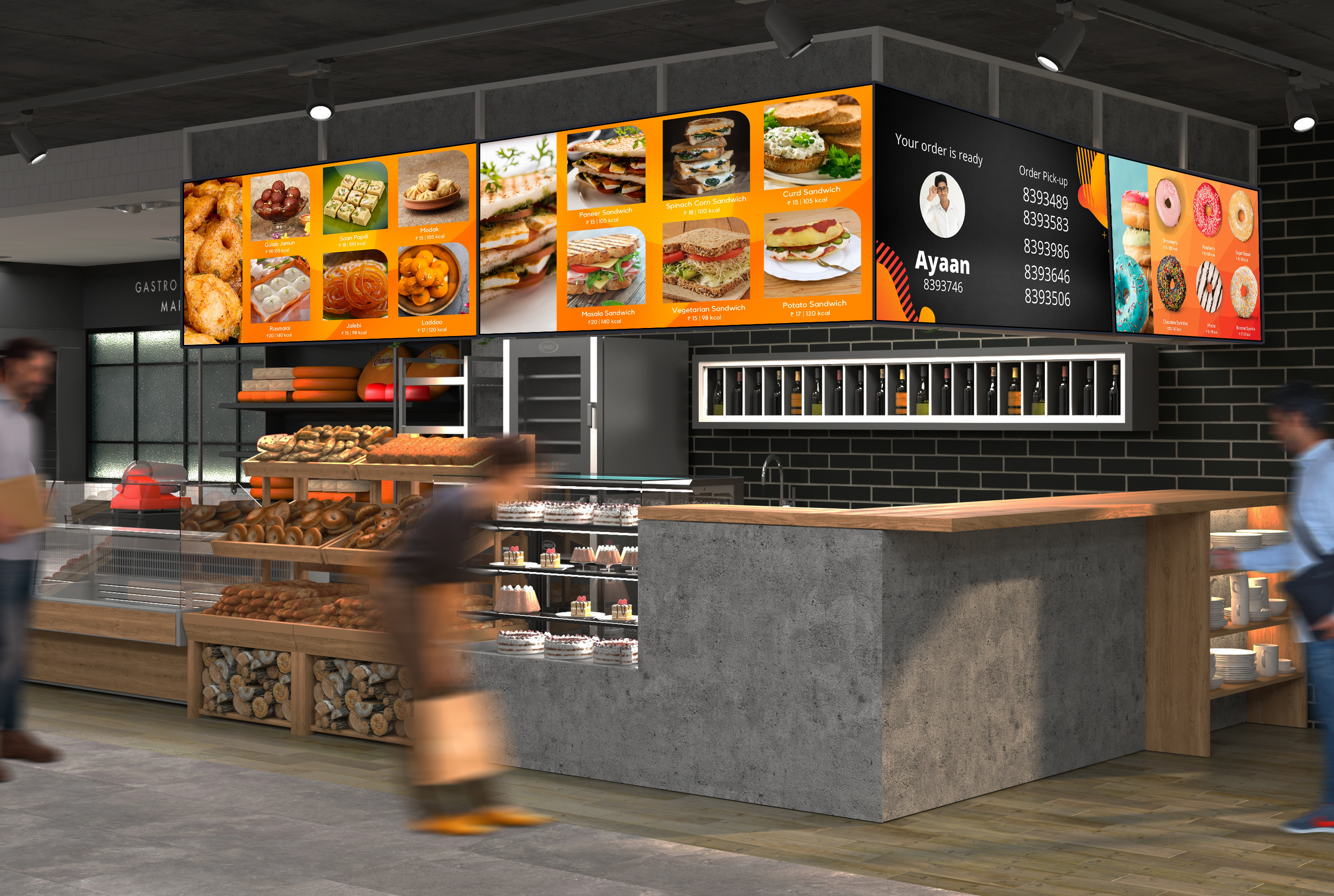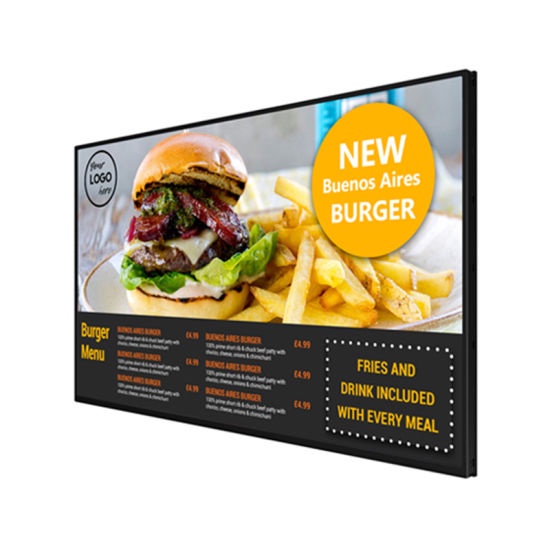
Menu Board Controller
Menu Board Controller In the rapidly evolving world of the food industry, keeping up with the latest technological advancements is crucial for success. One such innovation that has gained significant traction is the Menu Board Controller (MBC). Menu Board Controllers have revolutionized the way restaurants, cafes, and other food establishments present their menus to customers. With their versatility, efficiency, and dynamic features, MBCs are transforming the way businesses operate and interact with their patrons. In this article, we will delve into the incredible power of Menu Board Controllers and explore how they are reshaping the food industry.
Streamlining Menu Management:
Menu Board Controller offers a centralized platform for managing menus across multiple locations or screens. Gone are the days of manually updating each menu board, which was not only time-consuming but also prone to errors. With an MBC, businesses can effortlessly modify menu items, pricing, and promotions from a single control panel. This centralized approach ensures consistency and accuracy across all screens, providing a seamless experience for customers.
Dynamic Content Display:
Static menu boards are a thing of the past. MBCs enable businesses to create captivating and dynamic displays that capture customers' attention. The controllers allow for easy customization of content, such as eye-catching visuals, videos, and animated graphics. Whether it's showcasing daily specials, limited-time offers, or seasonal items, MBCs empower businesses to create engaging and visually appealing menus that enhance the overall dining experience.
Personalization and Targeted Marketing:
Menu Board Controllers offer an array of features that allow businesses to personalize their menus based on customer preferences and demographics. By integrating customer data, such as past orders or loyalty program information, MBCs can tailor menu content to individual customers or specific target audiences. This level of personalization enhances customer engagement and fosters a deeper connection between the business and its patrons, leading to increased customer satisfaction and loyalty.
Real-Time Updates and Synchronization:
In a fast-paced industry, the ability to make real-time updates is invaluable. Menu Board Controllers enable businesses to instantly update menus across all screens, ensuring consistent information is displayed at all times. Whether it's adjusting prices, adding new items, or promoting limited offers, the changes can be synchronized across multiple locations, guaranteeing a unified customer experience. This agility allows businesses to adapt to market trends swiftly and remain competitive.
Integration with POS Systems and Analytics:
Menu Board Controllers can be seamlessly integrated with Point of Sale (POS) systems, enabling businesses to streamline operations further. When a customer places an order, the POS system communicates with the MBC to update the menu board in real-time, reflecting items that are sold out or no longer available. Additionally, MBCs provide valuable analytics and insights by tracking customer interactions, popular menu items, and sales data. This data-driven approach helps businesses make informed decisions, optimize their menus, and maximize profitability.
Conclusion:
The Menu Board Controller is a game-changer in the food industry, revolutionizing the way menus are presented, managed, and optimized. With their streamlined menu management, dynamic content display, personalization capabilities, real-time updates, and integration with POS systems, MBCs empower businesses to provide an enhanced customer experience while driving operational efficiency. As technology continues to advance, embracing innovative solutions like Menu Board Controllers will become a necessity for food establishments seeking to stay ahead in a competitive market. The future of the food industry is undoubtedly bright, thanks to the power of Menu Board Controllers.
Menu Board Controller How Its Work?
A Menu Board Controller (MBC) is a sophisticated technology that operates behind the scenes to manage and control menu boards in various food establishments. It works in conjunction with digital display screens to provide a dynamic and interactive way of presenting menus to customers. Let's dive deeper into how Menu Board Controllers work:
Hardware and Software Integration:
Menu Board Controllers consist of both hardware and software components. The hardware typically includes a central processing unit (CPU), memory, storage, and connectivity options such as Ethernet or Wi-Fi. The software component comprises a user interface, content management system, and various control modules.
Content Management:
The MBC's content management system allows businesses to create, organize, and schedule the content that appears on their menu boards. This system provides a user-friendly interface where businesses can design and customize their menus, incorporating images, videos, animations, and text. It enables the organization of menu items, pricing, descriptions, and promotional content in a visually appealing and engaging manner.

Connectivity and Synchronization:
The MBC connects to the digital display screens, usually through wired or wireless connections. It ensures that the content displayed on the screens is synchronized and consistent across multiple locations or screens. By establishing a connection, the MBC can send updated menu information, promotions, or any changes to the menu boards in real time, ensuring that customers receive accurate and up-to-date information.
Centralized Control:
Menu Board Controllers provide a centralized control panel where businesses can manage and control their menus. This control panel allows for easy access to modify menu items, pricing, and promotional content. With a few simple clicks, businesses can update their menus across all screens simultaneously, saving time and reducing the risk of inconsistencies between different locations.
Integration with POS Systems:
Menu Board Controllers can integrate with Point of Sale (POS) systems, creating a seamless connection between the menus and the ordering process. When an order is placed, the MBC communicates with the POS system to update the menu board in real time. This integration ensures that items that are sold out or no longer available are promptly removed from the menu display, avoiding customer disappointment and confusion.
Analytics and Reporting:
MBCs provide valuable analytics and reporting features. By tracking customer interactions, sales data, and popular menu items, businesses can gather insights into customer preferences and behavior. This data-driven approach helps businesses make informed decisions regarding menu optimization, pricing strategies, and promotional campaigns, ultimately maximizing profitability.
Remote Management:
One of the key advantages of Menu Board Controllers is the ability to manage and control menus remotely. Business owners or managers can access the control panel from anywhere with an internet connection, allowing them to make updates or changes on the go. Remote management enhances flexibility, especially for businesses with multiple locations, as they can oversee and adjust menus from a central location.
Final Words:
In conclusion, Menu Board Controllers provide a comprehensive solution for managing and controlling digital menu boards in food establishments. By integrating hardware and software components, offering content management capabilities, enabling connectivity and synchronization, facilitating centralized control, integrating with POS systems, and providing analytics and remote management features, MBCs revolutionize the way menus are presented, managed, and optimized, ultimately enhancing the overall customer experience


No comments yet